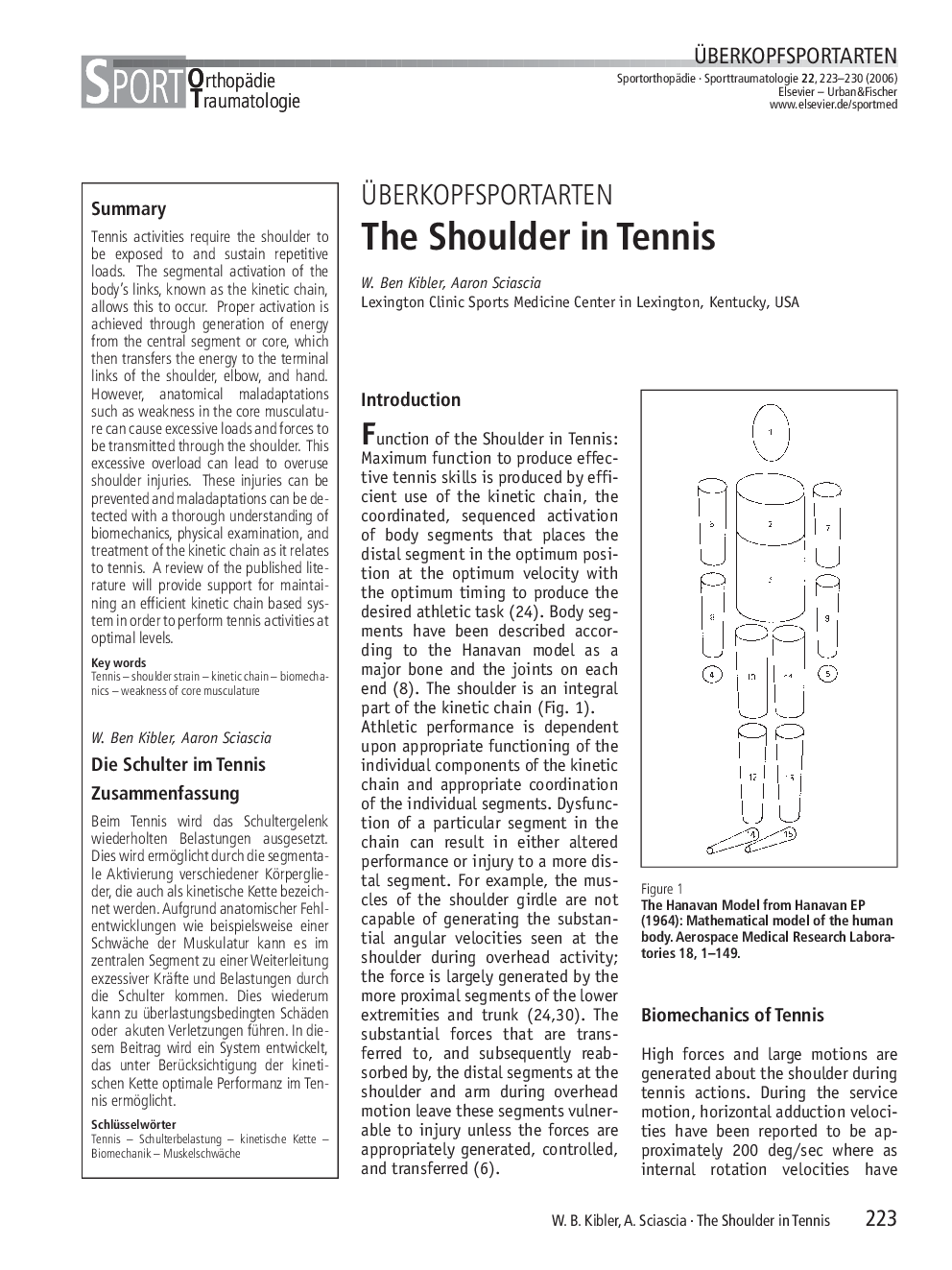| Article ID | Journal | Published Year | Pages | File Type |
|---|---|---|---|---|
| 2741255 | Sports Orthopaedics and Traumatology | 2006 | 8 Pages |
SummaryTennis activities require the shoulder to be exposed to and sustain repetitive loads. The segmental activation of the body's links, known as the kinetic chain, allows this to occur. Proper activation is achieved through generation of energy from the central segment or core, which then transfers the energy to the terminal links of the shoulder, elbow, and hand. However, anatomical maladaptations such as weakness in the core musculature can cause excessive loads and forces to be transmitted through the shoulder. This excessive overload can lead to overuse shoulder injuries. These injuries can be prevented and maladaptations can be detected with a thorough understanding of biomechanics, physical examination, and treatment of the kinetic chain as it relates to tennis. A review of the published literature will provide support for maintaining an efficient kinetic chain based system in order to perform tennis activities at optimal levels.
ZusammenfassungBeim Tennis wird das Schultergelenk wiederholten Belastungen ausgesetzt. Dies wird ermöglicht durch die segmentale Aktivierung verschiedener Körperglieder, die auch als kinetische Kette bezeichnet werden. Aufgrund anatomischer Fehlentwicklungen wie beispielsweise einer Schwäche der Muskulatur kann es im zentralen Segment zu einer Weiterleitung exzessiver Kräfte und Belastungen durch die Schulter kommen. Dies wiederum kann zu überlastungsbedingten Schäden oder akuten Verletzungen führen. In diesem Beitrag wird ein System entwickelt, das unter Berücksichtigung der kinetischen Kette optimale Performanz im Tennis ermöglicht.
